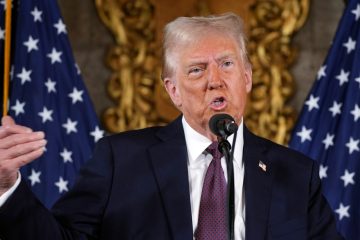U.S. Economic Growth Accelerates, Defying Slowdown Expectations

The U.S. economy picked up last quarter and remained well clear of a recession despite the Federal Reserve pushing interest rates higher. Gross domestic product grew at a seasonally and inflation adjusted annual rate of 2.4% in the second quarter, picking up slightly from 2% growth in the first three months of the year, the Commerce Department said Thursday. Consumer spending grew this spring, but at a slower pace for both goods and services. Business investment strengthened from April through June, with companies spending solidly on buildings and equipment. Companies rebuilt inventories, helping boost output.
Final sales to private domestic purchasers, a measure of consumer and business spending that gauges underlying demand in the economy, grew at a 2.3% annual rate in the second quarter, a solid pace but a slowdown from 3.2% growth in the first quarter. Overall, the GDP report adds to evidence the economy remains resilient amid higher interest rates. The labor market is still tight, and inflation is easing. Economists are now dialing back their recession expectations after many had projected a downturn would start in the middle of the year in response to Fed policy. The Fed acted to raise its benchmark interest rate to a 22-year high on Wednesday. Chair Jerome Powell didn’t rule out another increase, but emphasized the amount of time it can take for higher interest rates to cool inflation.
“We’ve turned the corner on the risk here, and instead of being heavily weighted to recession, it’s balanced between recession and not recession,” said Amy Crews Cutts, chief economist at AC Cutts & Associates, before the data was released. Consumer spending grew at an annual rate of 1.6% in the second quarter, down from 4.2% growth in the first quarter. The slowdown largely reflected cooling purchases of big-ticket items after Americans snapped up vehicles at the start of the year as they flowed back onto dealership lots.
Americans are benefiting from a strong labor market in which wage gains recently surpassed cooling inflation. Initial claims, a proxy for layoffs, declined by 7,000 last week to a seasonally adjusted 221,000, the Labor Department said Thursday. That is a historically low level that essentially matches the 2019 average when the labor market was also strong.
Gus Ayala, a 73-year-old retired banker, is still spending despite higher interest rates and prices. The El Mirage, Ariz., resident plans to buy a hybrid car later this year and will likely finance the vehicle, rather than pay in cash for it. He and his wife’s savings buffer is helping pay for his wife’s upcoming trip to Iceland. “We want to go spend money on what benefits us and allows us to enjoy our life,” Ayala said. Ayala changed some of his spending habits to cope with elevated inflation. He switched to a cheaper brand of coffee, Seattle’s Best, earlier this year after the cost of a 12-oz bag of Peet’s shot up to $12 from $9 last year. Ayala still needs his daily coffee fix, he said, while sipping his morning cup of joe.
Whether consumers will spend at the same pace later this year isn’t clear. High-interest rates will persist, making vehicles, appliances and other products Americans often take out loans to buy more expensive. Student-loan repayments are set to resume later this year. Americans are running through the stash of savings they built up while at home earlier in the pandemic. “There are a lot of canary-in-the-coal-mine signs that we’re due for a slowdown in consumer spending,” said Brett Ryan, senior U.S. economist at Deutsche Bank Securities.
Business investment grew at an annual rate of 7.7% in the second quarter, up sharply from 0.6% in the first quarter. Some long-term forces are helping boost investment despite higher interest rates. A surge in federal spending on chip-manufacturing plants and electric-vehicle factories is offsetting some other cutbacks. Net trade slightly subtracted from second-quarter growth, reflecting a sluggish global economy. Residential investment declined for the ninth consecutive quarter. Recent declines in residential investment reflect housing-market strains amid higher mortgage rates.
Still, a long-running shortage of previously owned homes is helping support new construction. The worst of the housing-market downturn could be in the rearview mirror. With more construction in the pipeline, residential investment could grow in the coming months. Consumers, businesses and economists are feeling more optimistic about the outlook. As inflation falls from historic highs and the labor market remains tight, the prospect of a soft landing—in which inflation returns close to the Fed’s 2% target without a recession—appears more probable. U.S. consumer confidence continued to improve in July, with many Americans expressing more optimism about the future, the Conference Board said this week. Consumers worried less about a recession.
Small businesses are feeling less downbeat about the economy. In July, 37% of small businesses said they believe the economy will worsen in the next 12 months, the best recording since February 2022, according to Vistage Worldwide, a business-coaching and peer-advisory firm. Economic growth in the U.S. and globally this year is likely to be stronger than previously estimated, the International Monetary Fund said Tuesday. The improved outlook reflects labor-market strength, strong spending on services such as tourism and diminished financial stability risks.










